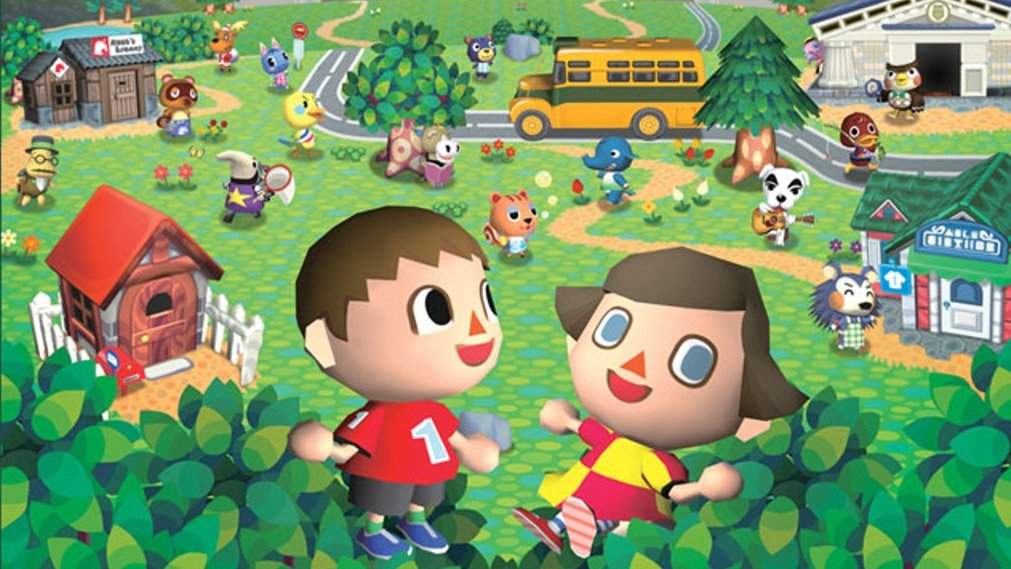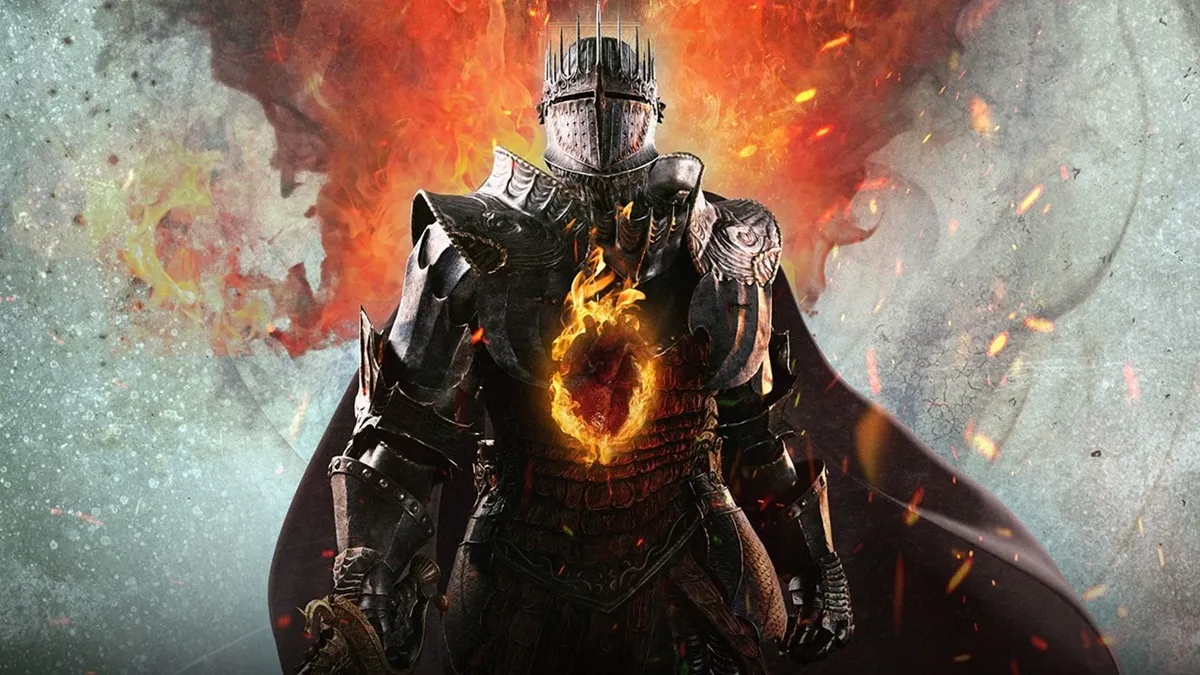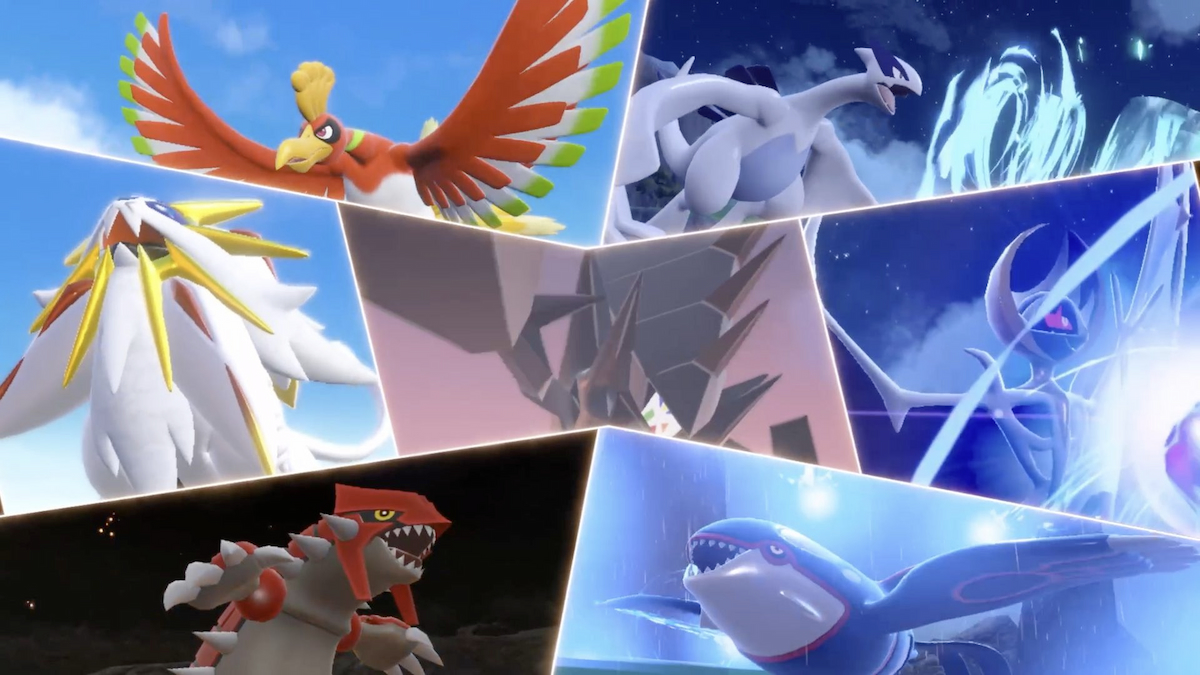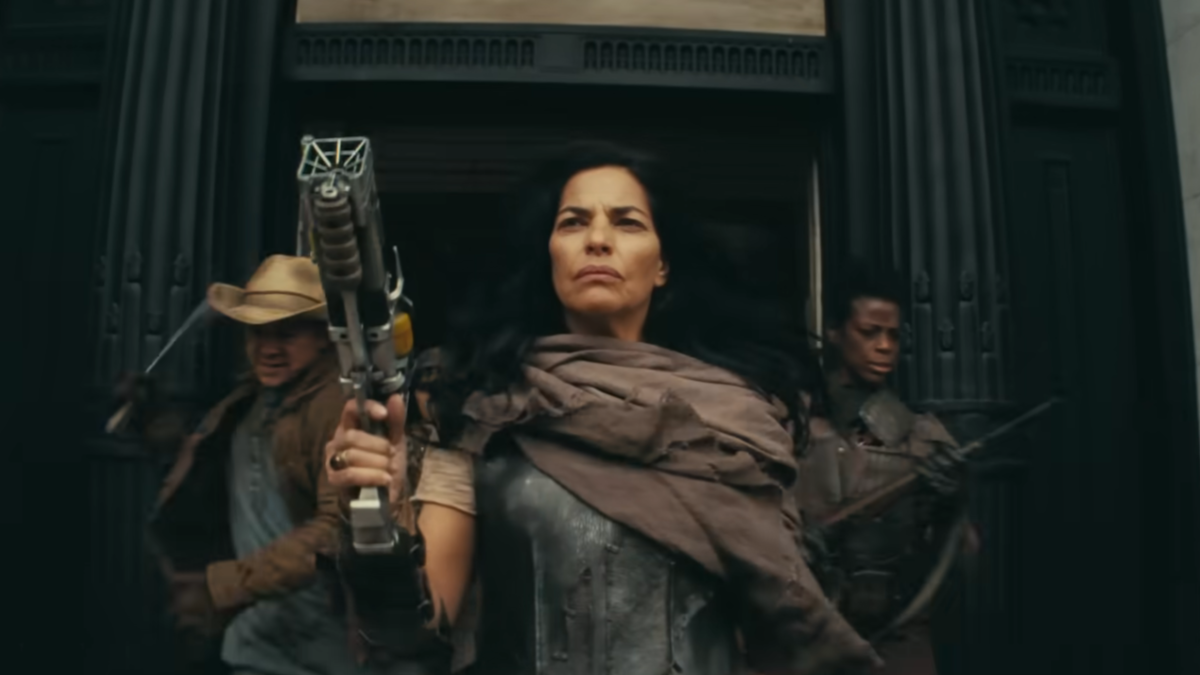Animal Crossing: City Folk may be the most unfortunately named videogame I’ve ever played. The Animal and Crossing parts don’t really bother me, but that City Folk suffix really gets me down. With a name like that, people are bound to assume that the game takes place in a city. That just ain’t right. The closest thing this game has to a city is tiny commercial area that features a big old clock tower, an ATM, and a few random stores. Come to this game expecting more of a city than that, and you’re going to be disappointed.
Why couldn’t Nintendo have gone with the name I suggested for this game; Lazy Wonder: Achievement Porn Vacation? That would have fit much better, as like its predecessors, Animal Crossing: City Folk remains focused on hunter/gatherer gameplay structured around hundreds of little stress-free goals. On second thought, maybe Benzodiazepines: The Videogame would have been a better name, as Animal Crossing: City Folk is just about as relaxing and addictive as videogames get. I don’t just mean “Wow, I can’t believe I played that game all night!” addictive, I mean “What happened to my life? Who am I? Oh god…I need help” addictive, the kind where hundreds of hours a year could easily be lost to this one game. Really, I had to go at this review alone because all the other Dtoid staff I asked to take a hit were too scared they’d become Animal Crossing junkies (again). The stuff is just that potent.
Hit the jump for details on what makes Animal Crossing: City Folk such a dangerous drug, as well as an (overly) extensive laundry list of the game’s new features.
Animal Crossing: City Folk (Wii)
Developed by Nintendo
Published by Nintendo
Released on November 17, 2008 (Global)
The Animal Crossing games are sort of famous for being “about nothing.” That’s crap. Animal Crossing is about a lot of things, but perhaps more than anything, the games are about risk-free gambling. In this world, every inhabitant, every object, every square inch of land is like a slot machine, except these slot machines cost nothing to play. Hit a rock with a shovel and money could fly out. Talk to a villager, and just because they like your face, they could give you an expensive sofa (they could also mug you, but that usually only happens on holidays). Catch a fish, shake a tree, dig a hole, write a letter, do just about anything in this game, and it could end up making you tons of cash.

It’s this random element of potential success that keeps Animal Crossing addicting. Neurologists are pretty sure that some people become gambling addicts because of an addictive chemical that is released in the gambler’s brain right before a potential win. That’s Animal Crossing in a nutshell; every second that goes by could be the second before the next big win. Thing is, there are no real losses in the game; you can’t really get hurt, you can’t die, and you rarely lose money. It’s gambling without any risk; a combination that provides simultaneous excitement and sedation.
This sedating appeal can’t be underestimated in accounting for the series’ ongoing success, especially in Japan. In an overcrowded country world-renowned for its focus on strict adherence to obligations (jobs, school, tradition, etc.), Animal Crossing provides a supremely serene, stress-free world where there is no right or wrong, just the Zen art of laziness. The first and only responsibility you have in the game is to get your boss to fire you. That’s when you raise your fist in the air and say something like, “Yeah boy! Work is for chumps! Time to get stupid!” It’s a divinely poetic moment for anyone who has ever dreamed of living a life centered around gainful unemployment; a life without homework, time-clocks, or expectations of any kind. In that way, Animal Crossing is adult life as most adults wish it could be; a life where all tasks are easily performed and unpleasantness just doesn’t exist.

There is just one more thing that makes Animal Crossing the ultimate in “vacation gaming”, and that’s all the stuff. Animal Crossing has more collectible junk than almost any other game. From material goods like wildlife, furniture, and songs, to more abstract things like friendships, championships, and even emotions, there is so much stuff to acquire in Animal Crossing: City Folk that one could easily play the game for years and not have it all.
Animal Crossing does what no other series dares to do. It rejects the notions of “challenge” and “difficulty” all together, and instead embraces the principals of constant potential for gain, zero obligations, and endless consumerism. It meets every instinctual drive human beings have other than screwing, sleeping, and slaughtering. That’s what makes it the ultimate porno for the hunter/gatherer set. That’s what makes it Animal Crossing.

Everything I’ve said so far about Animal Crossing is true of Animal Crossing: City Folk, Animal Crossing on the GameCube, and Animal Crossing: Wild World on the DS. After all, this is porn we’re talking about, and all porn is pretty much all the same. Just because it’s hunter/gatherer porn and not seduce/reproduce porn doesn’t make it any more sophisticated. That being said, there are many improvements and changes to be found in Animal Crossing: City Folk, but they are all so small that the untrained eye (or overly compressed video) may find them undetectable.
A warning: what follows is an unabashedly detailed list of all the little things I noticed in City Folk that make it different from other Animal Crossing games — read at your own risk.
For starters, multiple tweaks and upgrades have been made to the game’s presentation. At first glance, City Folk looks exactly like its GameCube ancestor, but play them both side-by-side on an HDTV and the differences become painfully clear. In City Folk, textures are much tighter, colors are more vibrant, objects are made from more polygons, and animations are smoother and more plentiful. Most of the improvements are subtle, but some, like the new fruit, fish and bug polygon models, are really striking. For people like me who have always liked Animal Crossing‘s visual style but found the DS and GameCube entries hard to play due to pixelated textures and wooden animations, City Folk is a huge relief for the eyes.

All the same, City Folk‘s improved looks are just window dressing, and they probably could have been achieved on the GameCube. The new things about City Folk‘s presentation that are really worth noting have nothing to do with graphics, and everything to do with minutiae. You can now change the camera angle to a worm’s-eye-view, so that you can both see objects passing overhead (like UFOs and balloons) as well as items hidden behind stuff in the foreground. You can now take pictures of on-screen events at and save them to your SD card. From there, you can play around with them in the Wii Photo Channel, or just send them off to a friend. The game can be played one-handed, with the Nunchuk or the Wii Remote, with or without motion controls. This last addition is especially nice, as junk food and Animal Crossing were practically made for each other.
I’m not even close to being done.
The catalogs of the fish and bugs you’ve collected are now fully animated. At the local beauty salon, you can now purchase any of your Mii’s faces (which, sadly, isn’t half as creepy or Leatherface-inspired as it sounds) to be worn whenever you like. You can still design your own pixel-based texture maps to be used as billboards, flags, grass-replacing ground textures, etc. — but now, if you’re designing them to be used as shirt patterns, you can design the front, back, and sleeves of the shirt as well. You can go to the town hall and complain about other villagers who you think are too sloppy or rude. Walk across the same stretch of grass for a few days in a row, and a dirty path will form in the grass. You can randomly bust in on the Resetti brothers’ secret HQ and totally freak them out. The guy who runs the coffee shop with store your gyroids for you if you kiss his ass for long enough. Bees are easier to catch. Fish have more unpredictable AI. The tri-force animation now has a little glow at the end.

I could go on, but I won’t (for your sake and mine); suffice it to say that there are more changes to the way City Folk plays than you can tell from a few hours (or even a few days) of playtime.
Now, onto the stuff. In City Folk, there are more fish, bugs, furniture, clothes, tools, and songs to collect. It’s all pretty standard stuff, and it does little to make the game feel truly new. That’s okay, though, because the more expensive and elusive items in City Folk do have an important purpose; they give you a reason to play the game past the point where you’ve paid off all your debt. In past Animal Crossing games, fully paying off your mortgage to Tom Nook was as close as you could get to “winning,” and after fifty hours or so of fishing and bug hunting, chances are you’ll have that done with cash to spare. In City Folk, paying off Nook is just the beginning.

From there, you can pay the town 200,000 bells (bells = in-game currency) to build a new bridge, 500,000 bells to build a wishing well, or 1,000,000 bells to build a lighthouse or a windmill. In achievement-speak, that’s like Dead Rising‘s zombie genocider multiplied by one hundred units of overkill. City Folk also features Gracie Grace, a huge department store where all the stuff costs ten times what it should (which is exactly why you’ll want it all.) There are also wearable helmets to make you look like Nintendo icons, such as Samus, Link, Midna, Toad, and even Majora’s Mask. These accessories, along with many other Nintendo-themed items, can only be bought with “shopping points”, and the only way to get those is to shop at Tom Nook’s store. It’s like Club Nintendo, but inside a Nintendo game. Maybe it isn’t as cool as the playable NES games found in the original Animal Crossing, but it’s damn close.
Had enough of this massive list of new stuff in City Folk? Well, too bad, because now it’s time to go over the new character interactions. All the holidays (and the special villagers that come with them) from the GameCube Animal Crossing are back. There are also two holidays that make their debut in City Folk, Easter and Mardi Gras, as well as a host of country-specific holidays for the Korean, Japanese, and European versions of the game. There are over 200 villagers, 50 of them being brand new (including a British bird named Sterling, wot wot) who come equipped with thousands of lines of new dialog. Their banter ranges from the straight-up quirky (“Did you know I was crowned Little Miss paranormal?”) to the wacky (“That’s vicious, like a poison viper with laser eyes.”) to quirky-wacky (“Just think of all the cornbread you could conjure if you knew magic!”). The types of interactions you might have with a villager have also increased. Now they may want to play hide-and-seek with you for cash and prizes, or teach you a new nickname (and not the other way around). Other times, they’ll get locked out of their house, and ask you to find their key (which can only be obtained by fishing for it in the river).

The game’s NPCs will also ask you to interact with other real-life players. Just yesterday, a blue elephant named Axel asked me to tell the other human player in my town to “remember the word clothes“. Sure enough, when the other person I share my Wii with next played City Folk, she got accosted by the same elephant, who demanded to know if I told her “the word.” When she typed in “clothes,” all was right with the world. He gave us both presents just for talking to each other, and couldn’t stop shooting flowers out of his face (he does that when he’s happy).
That’s actually an example of the one place where City Folk really works to win over players who were previously cold to the series. Though the game can be played alone with no ill effects, its multiplayer options are the by far the best the series has seen yet. Even if your friends are offline, you can still sell them stuff in your in-game auction house, or send them in-game letters and items through the game’s postal system. This is a great way trade items with online strangers whom you don’t necessarily want to interact with. If you do want to interact with people you’ve traded (ugh) friend codes with, you can engage in text-based chat just like in Wild World, or use the Wii Speak peripheral for honest-to-god online voice communication.

It’s the Wii Speak features that really make City Folk stand out. There still aren’t formal “games” you can play online, but if you do want to create your own activities (hide-and-seek, bug/fish-catching tournaments, snowball soccer, torture-the-villager competitions, zombie Mii mask-enabled Left 4 Dead matches, etc.), Wii Speak makes the process much more fun. It’s hard to imagine ever going back to text-based chat now. With Wii Speak, running around and yelling at your friends in City Folk really feels like being a kid again, running around in a friend’s backyard and playing with sticks. That’s an experience that you just can’t have if you need to stop and text every five seconds.
Even if you don’t have your Wii online at all, City Folk still allows for you to visit a friend’s town. You can store your character in your DS, physically carry your DS to a friend’s Wii, and then upload him/her to your friend’s City Folk. After grabbing all the stuff you want, you can then re-save your character on your DS and bring him/her back home. This works just like the memory-card based towns in Animal Crossing on the GameCube; just another reason for older fans of Animal Crossing who found the DS’s Wild World to be disappointing to give the series another shot.

I do have some problems with City Folk. Some small touches from the GameCube entry, like the NES games, the sports fairs, the island, and the random basketballs are all MIA. City Folk also recycles all of the “overworld” music from Wild World, which, for the first few hours, made the game feel like just an enhanced port of that three-year-old DS game. After those few hours passed, I saw that City Folk added more to the Animal Crossing series than any other game before it. It makes sense that City Folk is all about hundreds of little enhancements, as the series itself has always been about minutiae. It may not be the re-boot that non-fans (and ex-fans) of Animal Crossing were looking for, but City Folk is the ultimate entry in the ultimate series about goofing off. For that alone, it deserves an…
Score: 8.5 — Great (8s are impressive efforts with a few noticeable problems holding them back. Won’t astound everyone, but is worth your time and cash.)




